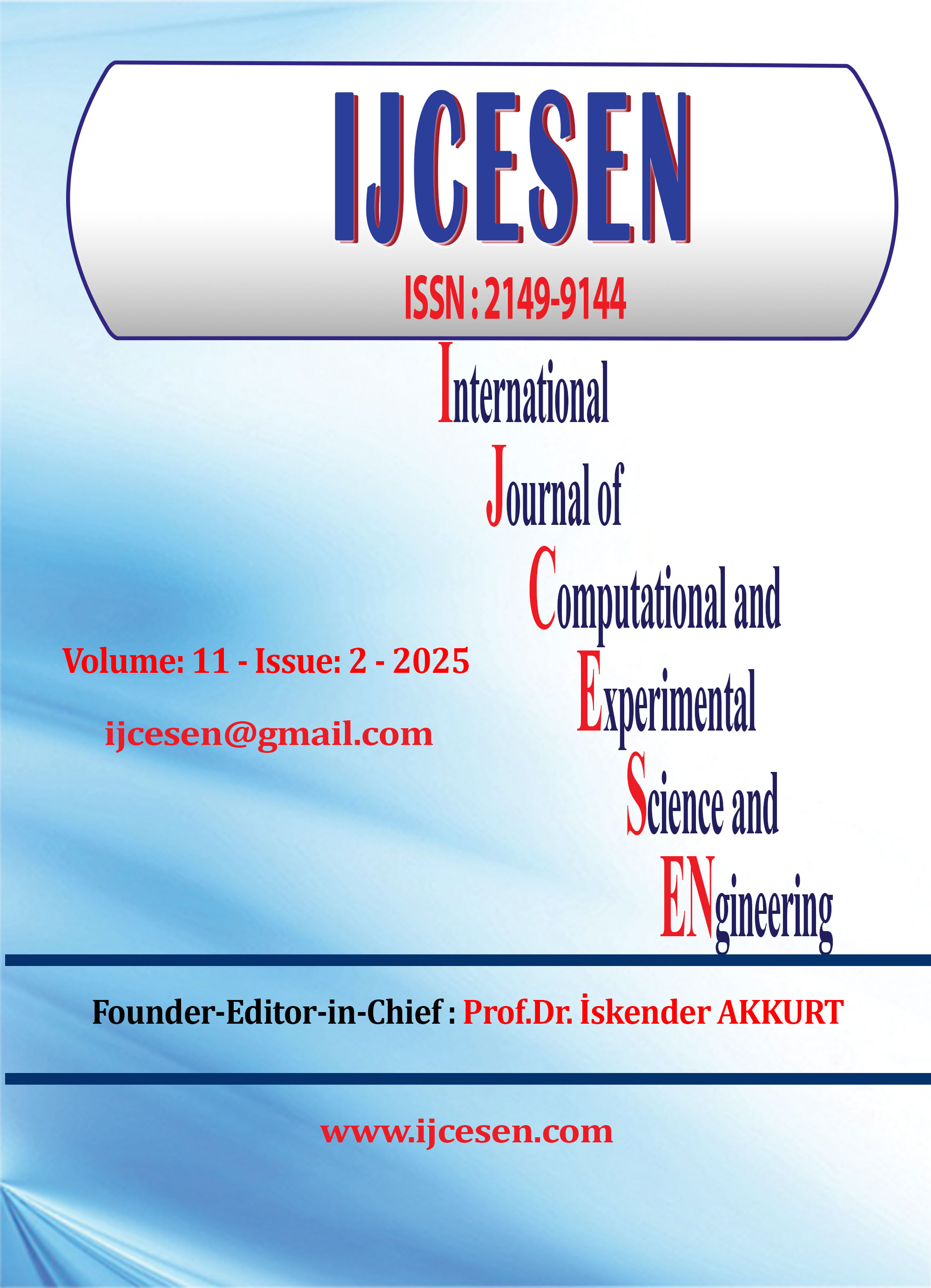Data-Driven Security Frameworks: AI-Infused Digital Twin Software Solutions for IoT
DOI:
https://doi.org/10.22399/ijcesen.1721Keywords:
Data-Driven Security Framework, AI-Infused Digital Twin, IoT Security, Threat Response, Network Resilience, Machine LearningAbstract
The rapid proliferation of Internet of Things (IoT) devices has introduced new challenges in maintaining the security and integrity of interconnected systems. Traditional security models struggle to keep pace with the dynamic and complex nature of IoT environments, leading to vulnerabilities and threats that are difficult to detect and mitigate in real-time. This paper presents a Data-Driven Security Framework named AI-Infused Digital Twin Software Solution (AI-DTSS), designed specifically for IoT environments. The proposed framework continuously monitors IoT networks by creating a digital replica of each device, capturing real-time data streams, and analyzing them using an ensemble of AI models, including recurrent neural networks (RNNs) for sequence prediction and generative adversarial networks (GANs) for synthetic data generation. An adaptive threat response mechanism is implemented to automatically update security protocols based on detected anomalies. The proposed AI-Infused Digital Twin Software Solution provides a scalable, robust, and adaptive security framework for IoT networks. By leveraging digital twin technology in conjunction with AI models, AI-DTSS offers a real-time, data-driven approach to threat detection and response, making it a valuable tool for securing complex IoT ecosystems.
References
[1] A. Vaswani et al., "Attention is All You Need," Advances in Neural Information Processing Systems, vol. 30, pp. 5998–6008, 2017.
[2] A. Radford et al., "Language Models are Few-Shot Learners," arXiv preprint arXiv:2005.14165, 2020.
[3] T. Chen, Z. Tang, and H. Xu, "Codex: Evaluating the Capabilities of GPT-3 in Code Generation," ACM Computing Surveys, vol. 55, no. 4, pp. 1–32, 2023.
[4] M. Allamanis, E. T. Barr, P. Devanbu, and C. Sutton, "A Survey of Machine Learning for Big Code and Naturalness," ACM Computing Surveys, vol. 51, no. 4, pp. 1–37, 2018.
[5] J. Austin et al., "Program Synthesis with Large Language Models," arXiv preprint arXiv:2108.07732, 2021.
[6] S. Jain and D. Hakkani-Tür, "Analyzing and Mitigating the Impact of Target Leakage in Code Generation Tasks," EMNLP, pp. 1521–1533, 2021.
[7] H. Svyatkovskiy, S. Sundaresan, Y. Fu, and N. Sundaresan, "Intellicode Compose: Code Generation Using Transformer," arXiv preprint arXiv:2005.08025, 2020.
[8] Y. Lu et al., "CodeXGLUE: A Benchmark Dataset and Open Challenge for Code Intelligence," Empirical Methods in Natural Language Processing (EMNLP), 2021.
[9] S. Chen, Y. Liu, and X. Wang, "Evaluating and Improving the Robustness of Code Generation Models," Proceedings of the 2022 ACM SIGSOFT FSE, pp. 245–256, 2022.
[10] S. Ahmad, A. Chakraborty, and D. R. Mani, "A Transformer-Based Model for Fixing Bugsin Code," Proceedings of the AAAI Conference on Artificial Intelligence, vol. 35, no. 15, pp. 13028–13036, 2021.
[11] F. Zha et al., "Towards Accurate Code Completion with Graph-Based Deep Learning," IEEE Transactions on Software Engineering, vol. 49, no. 1, pp. 78–91, 2023.
[12] A. Sobania, M. Hill, P. Rieping, and S. Kowalewski, "An Empirical Study of GitHub Copilot's Code Suggestions," Proceedings of the 30th ACM Joint European Software Engineering Conference and Symposium on the Foundations of Software Engineering (ESEC/FSE), pp. 228–239, 2022.
[13] X. Chen et al., "Evaluating the Use of Code Language Models on Domain-Specific Languages," arXiv preprint arXiv:2107.07207, 2021.
[14] S. Wang et al., "Detecting Vulnerabilities in Source Code Using CodeBERT and Graph Neural Networks," IEEE Transactions on Software Engineering, vol. 48, no. 6, pp. 1785–1801, 2022.
[15] H. Zhu et al., "Automatic Unit Test Generation with Pre-trained Language Models," ACM Transactions on Software Engineering and Methodology, vol. 32, no. 1, pp. 1–27, 2023.
[16] S. Liu, D. Rajan, and M. White, "Explainable AI for Code: A Survey," Journal of Systems and Software, vol. 198, 111478, 2023.
[17] P. Zhu, Q. Shi, and D. Wang, "Secure Code Generation Using Adversarial Training," Proceedings of the 2023 IEEE Symposium on Security and Privacy (SP), pp. 1231–1244, 2023.
[18] M. Terrel and J. Z. Zico, "Legal Implications of AI-Generated Code: Licensing, Ownership, and Accountability," Computer Law & Security Review, vol. 45, 105693, 2022.
[19] N. Hosseini, B. Vasilescu, and K. Nagel, "LLM-based Tutors for Teaching Programming: Opportunities and Challenges," Proceedings of the 2023 ACM Conference on Learning at Scale (L@S), pp. 127–139, 2023.
[20] C. Liu et al., "Challenges and Opportunities of Generative AI for Software Engineering," IEEE Software, vol. 40, no. 1, pp. 43–51, 2023.
Downloads
Published
How to Cite
Issue
Section
License
Copyright (c) 2025 International Journal of Computational and Experimental Science and Engineering

This work is licensed under a Creative Commons Attribution 4.0 International License.





